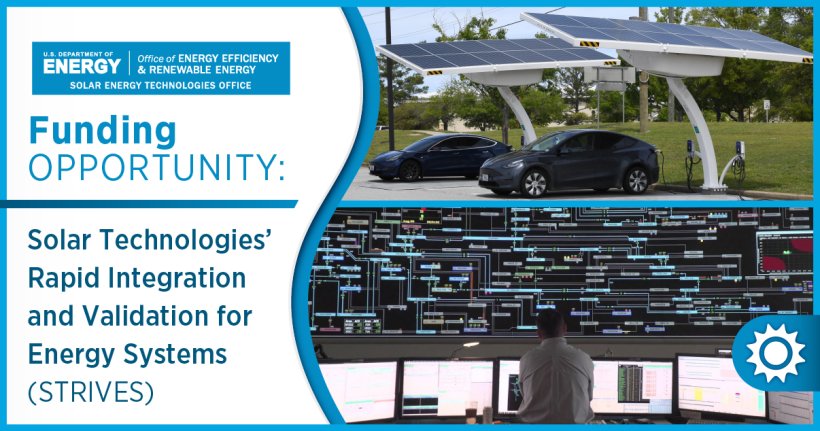Sign up for daily news updates from CleanTechnica on email. Or follow us on Google News!
The news today is dominated by the United Auto Workers strike against Ford, GM, and Stellantis. For generations, the UAW has picked one company as its target during contract negotiations, but this year the union has taken on all three companies at once. Industry apologists are horrified that the UAW would be so bold. How dare they!
The New York Times accurately describes the strike in this headline — “Battle Over Electric Vehicles Is Central to Auto Strike.” In the sub-heading, it says, “Carmakers are anxious to keep costs down as they ramp up electric vehicle manufacturing, while striking workers want to preserve jobs as the industry shifts to batteries.” It describes what is happening as a “once-in-a-century technological upheaval that poses huge risks for both the companies and the union.”
Of all the reports in the mainstream press, that one comes closest to the truth. The drivetrain in a conventional car has thousands of parts. The drivetrain in an electric car has less than a dozen. Electric cars are simpler to manufacture, which means fewer workers are needed. The UAW members can see the train coming down the track and they know the EV revolution portends massive changes in the way cars are made, changes that may eliminate many of the jobs union members now hold. How will they pay their mortgages and send their children to college if those jobs are eliminated?
The UAW & The American Middle Class
“We want to become middle class again,” Andrew Hudson, who works at a Ford assembly plant in Wayne, Michigan, told the Washington Post. A few weeks ago, Hudson reached Ford’s top pay rate of $32 an hour (the benefit package adds quite a bit to the base salary), but he said it took him six years to get there. He is striking because he doesn’t want his newer colleagues to have to wait that many years to get to the top pay level.
“We can’t experience the American Dream that so many autoworkers before us, like my grandfather, got to,” he said. His grandfather was able to own a house and two cars while putting his kids through college on an autoworker’s salary. By contrast, Hudson said he and his co-workers are “struggling” to do the same on their own salaries.
It’s no wonder. According to the Bureau of Labor Statistics, measured in 2023 dollars, wages in the private sector have risen about 19% since 1990 while wages for autoworkers have declined 30% since 2003. Meanwhile, inflation has diluted the buying power of those wages for all workers. If people wonder why Americans are so angry, they need to look no further than how supply side economic policies have hollowed out the American middle class while grossly enriching those at the top.
In the 1960s, corporate executives earned about 20 times what hourly workers did. Today the ratio is closer to 400 times. The manufacturers are aghast that the UAW is demanding a 40% wage hike and do not see the irony that Mary Barra, CEO of General Motors, has seen her compensation increase by that amount in the past 4 years. Who do you know who makes 40% more today than they did in 2019?
The UAW & The EV Revolution
The New York Times says the strike comes at a time when the traditional automakers are investing billions to develop electric vehicles while still making most of their money from selling gasoline powered cars. “The negotiations will determine the balance of power between workers and management, possibly for years to come. That makes the strike as much a struggle for the industry’s future as it is about wages, benefits and working conditions,” it says.
Madeline Janis is the executive director of Jobs to Move America, an advocacy group that works closely with the UAW and other unions. “We are at the dawn of another industrial revolution and the way we’re going is the way we went in the last industrial revolution — a lot of profit for a few and misery and not good jobs for the many,” she said.
Some executives and analysts have characterized what is happening in the industry as the biggest technological transformation since Henry Ford’s moving assembly line started up at the beginning of the 20th century. “The transition to EVs is dominating every bit of this discussion,” John Casesa, managing director at Guggenheim Partners, tells the New York Times. He was previously the head of strategy at Ford. “It’s unspoken, but really it’s all about positioning the union to have a central role in the new electric car industry.”
Ford CEO Jim Farley said after the strike began that the UAW demands would force Ford to scrap its investments in electric vehicles. “We want to actually have a conversation about a sustainable future, not one that forces us to choose between going out of business and rewarding our workers,” he said.
The Political Calculus
The strike, of course, is taking on political overtones. The Maniac of Mar-A-Lago is using it as an excuse to attack electric cars in general, and Bloomberg is wringing its hands and moaning about how the uppity union leaders are not sticking to the script. Why, UAW president Shawn Fain actually failed to show up for a scheduled bargaining session with Bill Ford. Such impudence toward one’s betters!
The stakes for the UAW and America couldn’t be higher. Bloomberg warns that if workers sacrifice for months, throwing their lives and others’ into disarray, only to end up having to accept something much closer to what the companies have been offering, that could serve as just the sort of cautionary tale managers use to try to dissuade workers from unionizing in the first place.
The UAW strike is also perilous for Joe Biden, who has made building an EV and battery manufacturing industry a pillar of his economic agenda. Can he live up to his own billing as the most pro-union president in history without compromising the competitiveness of the US auto industry against lower-cost rivals, led by China, Bloomberg asks? Biden knows his hopes of winning reelection are dead in the water without the support of America’s unions.
“If the union has taken a more militant turn and is punished for it successfully, that will intimidate workers across the board,” University of Chicago historian Gabriel Winant tells Bloomberg. “If they win, it will augment the message that is already circulating with greater frequency — that now is the moment that workers have leverage.”
One of the issues that resonates with UAW members is that the Inflation Reduction Act is pouring billions of dollars into building new factories in red states where unions struggle to gain traction with workers. They want the companies to commit to paying union scale wages at those factories but the companies say their hands are tied because most of them are joint ventures with other partners — many of them based in South Korea — and so “Gee, we’d love to help you, fellas, but it’s out of our control.”
The Takeaway
The UAW strike is a gamble. It’s either bold or foolhardy, depending on your point of view. I confess that I fully support the union. I am a fourth generation immigrant whose ancestors came over in the bilges of ocean liners from Ireland. They polished the brass and changed the sheets in the mansions on Bellevue Avenue in Newport, RI. They were drivers and fare collectors on the streetcars and buses of Providence. They were union members through and through and so I was raised in a pro-union household. That upbringing has helped define the person I have become and I am proud to honor the hard work and industry of those who came before me.
Woonsocket, Rhode Island, is a typical New England mill town. It exists because it was home to many textile mills powered by the Blackstone River. Today, visitors to the Museum of Work and Culture in Woonsocket can learn how those who labored in those mills struggled to support their families.
It tells the stories of the mill owners who used their wealth and the privilege their ancestry provided to extract every ounce of effort from their workers for the absolute minimum cost. The mills were staffed by immigrants from Quebec, Krakow, and Kerry — people with no political power — who were used and abused like farm animals. The windows were kept shut to avoid imperfections in the cloth while the workers toiled in stifling conditions and breathed textile fibers that ruined their lungs.
There were no worker’s compensation programs, no retirement plans, and no sick days. If you didn’t show up for work, you were fired and someone else was only too happy to replace you. The union movement changed all that. There are many stories and songs about mill life, but none as poignant as “Millworker,” sung by James Taylor. Take a moment to listen, if you can.
The UAW strike is about so much more than wages and benefits. It is about honoring the contributions that industrial workers have made and will continue to make to America. It is about respecting those who work with their hands and their backs. If they choose to be less than deferential to their corporate masters, good for them.
Ever since Reagan fired the air traffic controllers, the union movement in America has been in decline. Reactionaries have hollowed out the National Labor Relations Board and turned it into a servant of corporations. The game is stacked against workers who seek to use their collective power to seek a better life for all.
There is an apocryphal story about a gladiator who wants to fight a slave, but first he buries his opponent in a hole so he can’t use his arms. Desperate, the slave reaches up, clamps his teeth on the gladiator’s most sensitive parts and bites down — hard. “Hey,” the gladiator screams. “Fight fair!” Workers in America are similarly hemmed in by rules, regulations, and laws that favor the rich and powerful.
If the UAW strike does not produce a significant victory, the union movement in America will suffer a devastating setback, one it may never recover from. The future of work in America is being written as you read this.
Have a tip for CleanTechnica? Want to advertise? Want to suggest a guest for our CleanTech Talk podcast? Contact us here.
EV Obsession Daily!
I don’t like paywalls. You don’t like paywalls. Who likes paywalls? Here at CleanTechnica, we implemented a limited paywall for a while, but it always felt wrong — and it was always tough to decide what we should put behind there. In theory, your most exclusive and best content goes behind a paywall. But then fewer people read it!! So, we’ve decided to completely nix paywalls here at CleanTechnica. But…
Thank you!
Tesla Sales in 2023, 2024, and 2030
CleanTechnica uses affiliate links. See our policy here.




